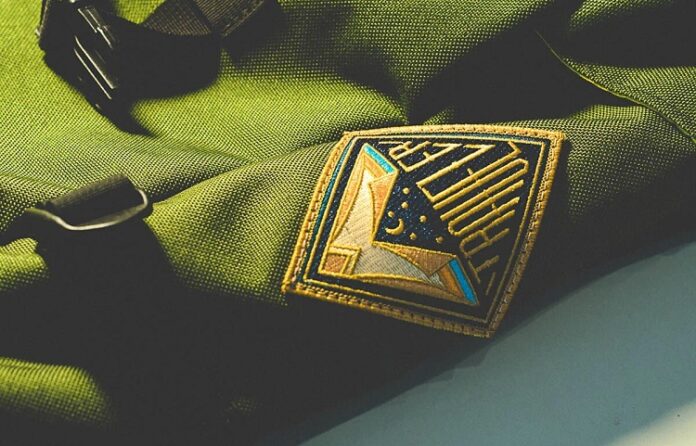Iron-on patches work no better today since despite everything they work a similar way they generally have: heat from an iron breakers a fix on. Tragically, heat in the garments dryer at that point relaxes it.
One applies an iron-on fix with warmth, more often than not from an iron. The warmth softens the fix’s cement which saturates the strands of the fix and the article of clothing and weight at that point ties them together. A garments dryer’s warmth, while not as extreme as the iron’s, likewise mollifies the glue and debilitates the bond. Also, this occurs while the article of clothing is being “worked over” by the dryer’s tumbling activity. After some time, the fix isolates from the piece of clothing.
Not washing a fixed piece of clothing in high temp water and not tumble drying it will help draw out the fix’s life, at that point as now.
In the event that you attempt to utilize Velcro (or some other snare and-circle tape) WITHOUT sewing it on, to make it as solid as would be prudent, you can’t anticipate that it should hold up under any sort of stress. I’ve attempted to utilize different glues, to spare time and make it simpler to apply, with no enduring achievement… it generally pulls off in the end, when you more than once apply any measure of weight on it. In this way, don’t considerably try attempting. Additionally, a few bundles of Velcro latches have a light glue as of now on them when you get them; this is simply to enable you to hold it set up before you sew it on. If all else fails, on the off chance that you completely can’t sew the Velcro set up, maybe have a go at utilizing bolts to apply it.
Then again, in the event that you need the Velcro to work as a clasp that won’t have any pressure put on it, (for example, staying a table skirt onto the edge of a table), at that point a not too bad glue ought to work; simply be cautious when you expel the snare and circle tapes from one another.
Table of Contents
Iron on Patches Work
Iron on patches once in a while rise up to long haul rigors of washing and wearing, and washing, and . . . In a shockingly brief timeframe, they will start to ‘lift’ and quarrel at the edges. When that occurs, they can be evacuated at the scarcest incitement. I like to think about the iron-on highlight as an approach to ‘grapple’ the fix for position, with the goal that when I line it down, it doesn’t move twisted.
Remember, notwithstanding, that iron-on glue is a paste that your machine’s needle will get, and convey to the inward functions of the machine. A little wipe down with nail clean remover, subsequent to sewing each fix ought to anticipate issues.
To start with, you have the best name, so: obviously you can sew iron-on patches—however for what reason would you? Those patches are solid, genuine, the edges scarcely fight, however they explicitly and everlastingly hold a similar hardened, I-am-a-fix reality. Why not utilize “genuine” texture? You should simply smooth and squeeze the edges of the fix (in the event that you have an iron, utilize that as well), and after that sew it down. Keep in mind, as well, for any fix work, trim the fix to the littlest size… or make the fix an intriguing subtlety all alone. Another recommendation: put the fix within the piece of clothing or thing. Another recommendation: modest fix on inside; weaving string in some flawless shading and shape outwardly. As it were, patches might be simply practical or offer fascinating flair.
Beautiful Iron on Patches
For a beautiful fix: You can circumvent the edge with crisscross set to the littlest join step, which will make a glossy silk fasten (search online to perceive what it resembles and if that is the thing that you need) OR if the fix as of now has a silk line around the edge, and you don’t need it any bulkier, you can pick a comparable shading string as the silk line, and sew a straight line around the edge simply inside the silk line, so it’s not self-evident.
For a basic fix:
Sew around the edge of the fix to hold the edges down. At that point you have to settle on a decision about how you sew inside the edges. For example in the event that the tear is level, the draw on the texture is most likely vertical, so sew over the tear to hold the tear together and include quality vertically. Return and forward, however less that you shred the texture or the fix. For gaps (possibly from keys or coins) simply ensure that the fix is bigger than the opening, and sew forward and backward enough to tack down the gaps and fortify any frail zones.




